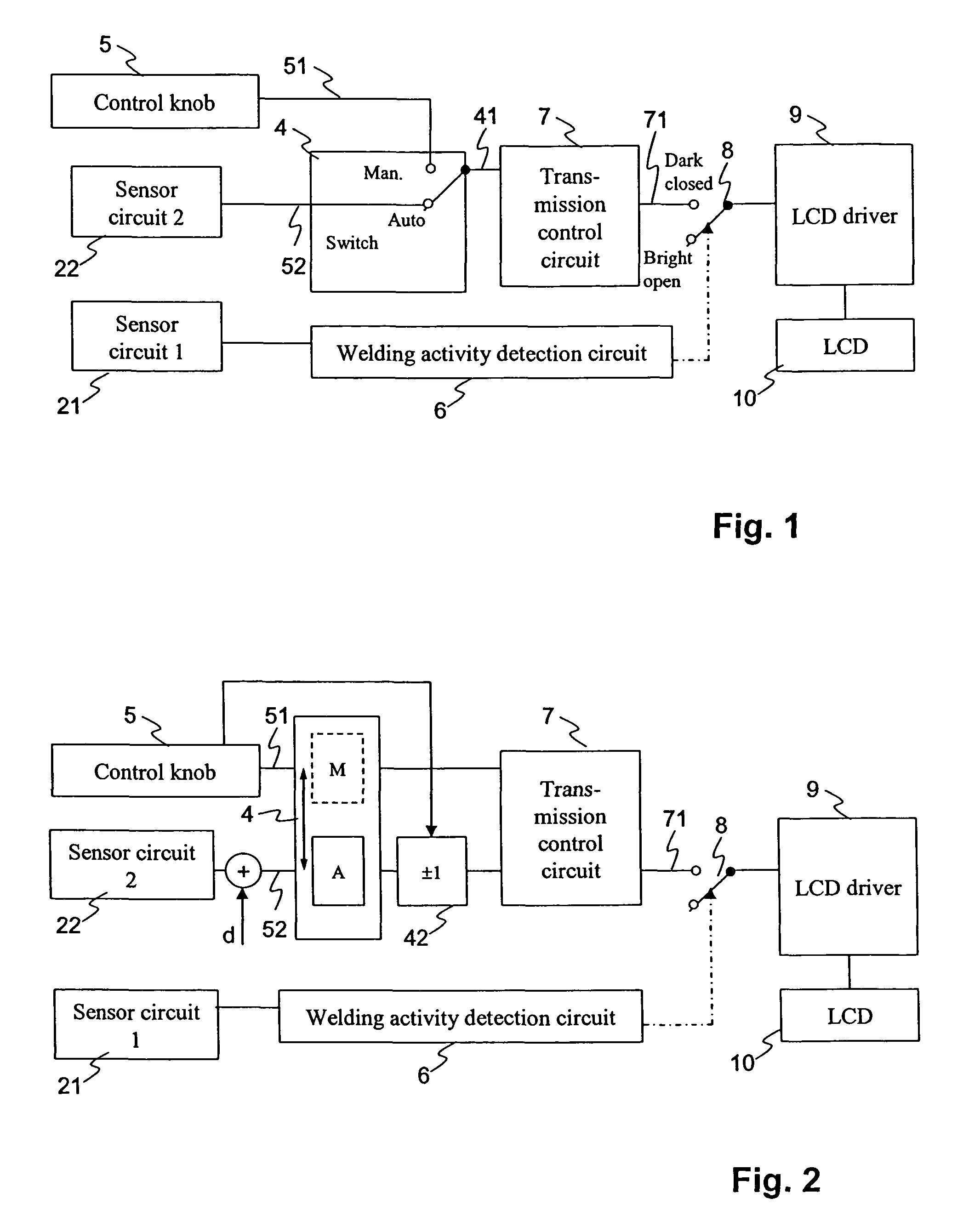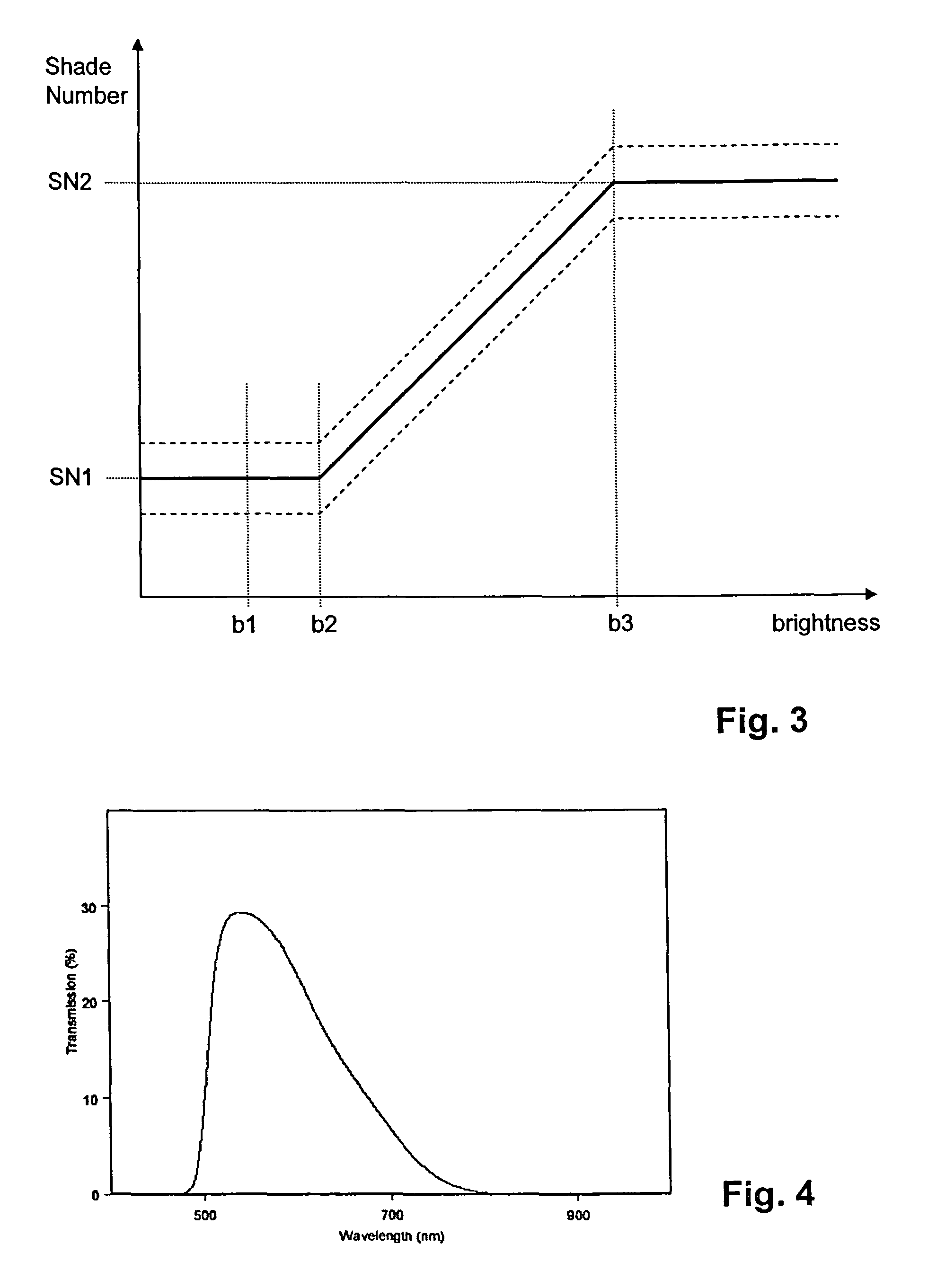Anti-glare protection device
a protection device and anti-glare technology, applied in the field of anti-glare protection devices, can solve the problems of product failure, and achieve the effect of improving protection quality
- Summary
- Abstract
- Description
- Claims
- Application Information
AI Technical Summary
Benefits of technology
Problems solved by technology
Method used
Image
Examples
Embodiment Construction
[0009]It is therefore an object of the invention to overcome the limitations of the prior art, and to create an anti-glare protection device of the type mentioned initially that provides increased usability of a welding mask incorporating the anti-glare protection device.
[0010]A further object of the invention is to provide an anti-glare protection device with improved protection quality.
[0011]These objects are achieved by an anti-glare protection device for a welding mask, comprising a transmission control circuit for determining a darkening signal from a control signal, a welding activity detection circuit for detecting a welding activity, based on a first sensor signal from a first sensor circuit, wherein the welding activity detection circuit is arranged to control, by means of an activation switch, whether either the darkening signal or a signal corresponding to an undarkened optical filter is input to a filter drive circuit. The anti-glare protection device further comprises s...
PUM
 Login to View More
Login to View More Abstract
Description
Claims
Application Information
 Login to View More
Login to View More - R&D
- Intellectual Property
- Life Sciences
- Materials
- Tech Scout
- Unparalleled Data Quality
- Higher Quality Content
- 60% Fewer Hallucinations
Browse by: Latest US Patents, China's latest patents, Technical Efficacy Thesaurus, Application Domain, Technology Topic, Popular Technical Reports.
© 2025 PatSnap. All rights reserved.Legal|Privacy policy|Modern Slavery Act Transparency Statement|Sitemap|About US| Contact US: help@patsnap.com



